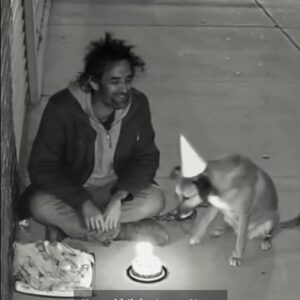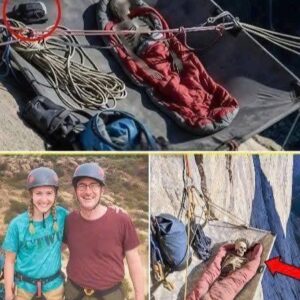In January 1998, Tom and Eileen Lonergan — an American couple from Louisiana — vanished during a scuba diving trip in Australia’s Great Barrier Reef. Their disappearance in shark-infested waters later inspired the film Open Water and fueled speculation about what truly happened.
Tom, 33, and Eileen, 28, had recently completed two years with the U.S. Peace Corps in Fiji and were traveling through the South Pacific. Experienced divers, they joined 24 others aboard the MV Outer Edge, a charter boat bound for St. Crispin’s Reef, a beautiful yet dangerous stretch of the Great Barrier Reef.
That day, they completed two dives and prepared for a third at a site called Fish City — known for its dense marine life and, as local fisherman Mick Bird later noted, unusually high shark activity: “They should rename that place Shark City.”
During their final dive, British tourist Bryan Brogdan recalled seeing the couple admiring a giant clam beneath rays of sunlight before surfacing. He returned to the boat, but Tom and Eileen stayed behind — the last time anyone saw them alive.
Around 3 p.m., crew member George Pyrohiw conducted a headcount at skipper Geoffrey Nairn’s request. There were supposed to be 26 people aboard, but two passengers had jumped back in for quick photos, confusing the count. Pyrohiw reported 24; Nairn allegedly said, “And two in the water makes 26.” The mistake went uncorrected — and the Lonergans were left behind.
When the Outer Edge docked in Port Douglas later that afternoon, two dive bags were left on deck. The crew assumed their owners would call later. Even missing air tanks and weight belts didn’t raise concern. The shuttle driver noticed Tom and Eileen never showed up for their hotel transfer but was told not to worry. By nightfall, the couple was still adrift in open ocean.
Over the next two days, the dive boat made more reef trips as if nothing were wrong. Only when the skipper finally opened the unclaimed bags did alarm bells ring — inside were personal documents, Tom’s wallet, and the same shirt he’d worn that day. Nairn immediately alerted authorities.
A massive search began, involving Navy aircraft, helicopters, and police boats scouring the Coral Sea. After days of searching, no trace of the couple was found.
Ten days later, Tom’s buoyancy compensator surfaced 50 miles north of St. Crispin’s Reef. Soon after, Eileen’s wetsuit washed ashore with jagged tears — possibly from a shark. Her fins, dive hood, air tank, and vest were later recovered, scattered along Queensland’s coastline. Their bodies, however, were never found.
As investigators probed deeper, they uncovered the couple’s personal diaries in their Cairns hostel room. Tom had written a haunting entry six months earlier:
“I feel as though my life is complete and I’m ready to die. From here my life can only get worse. It has peaked and it’s all downhill from here until my funeral.”
Sixteen days before the dive, Eileen expressed fear about Tom’s dark mindset:
“Tom hopes to die a quick and fairly painly [painless] death… He’s not suicidal, but he’s got a death wish that could lead him to what he desires, and I could get caught in that.”
The diary revelations sparked speculation that the couple may have planned their disappearance. However, no evidence supported the theory: their bank accounts remained untouched, their life insurance unclaimed, and no sightings ever emerged.
Authorities concluded that the tragedy was the result of a devastating chain of human errors — an inaccurate headcount, poor communication, and complacency. The Outer Edge’s skipper, Geoffrey Nairn, was later charged with manslaughter but acquitted, though his company’s license was revoked.
The Lonergans’ disappearance remains one of the most chilling real-life mysteries of the Great Barrier Reef — a haunting reminder of how a single mistake in open water can turn a routine dive into a nightmare.





